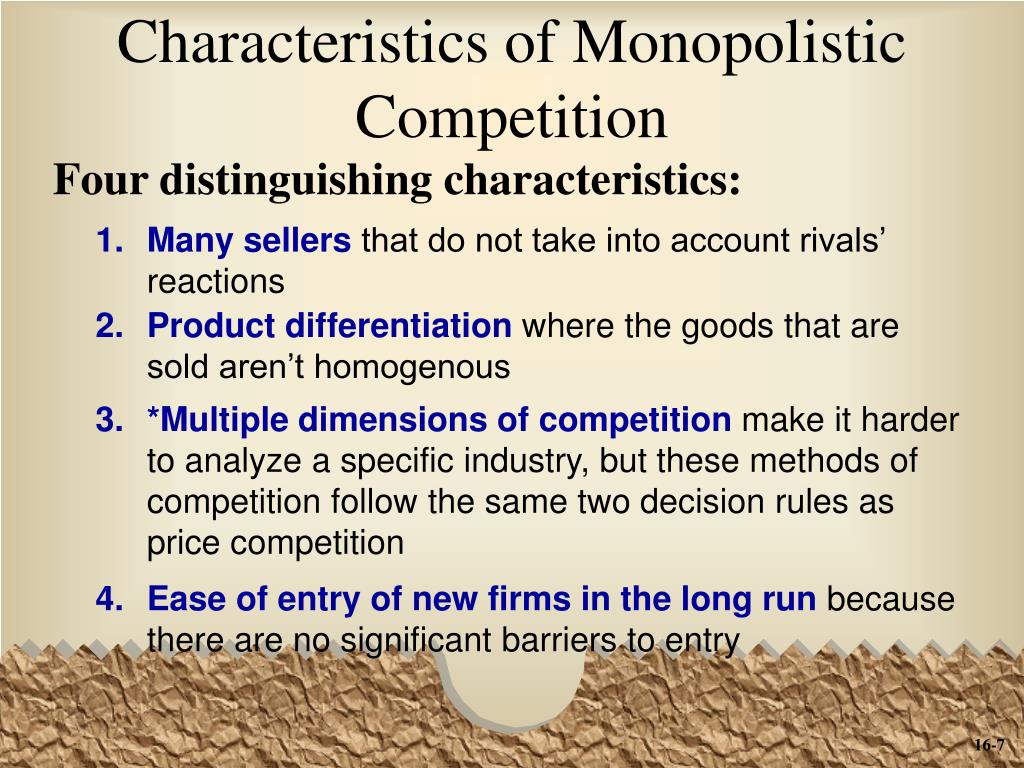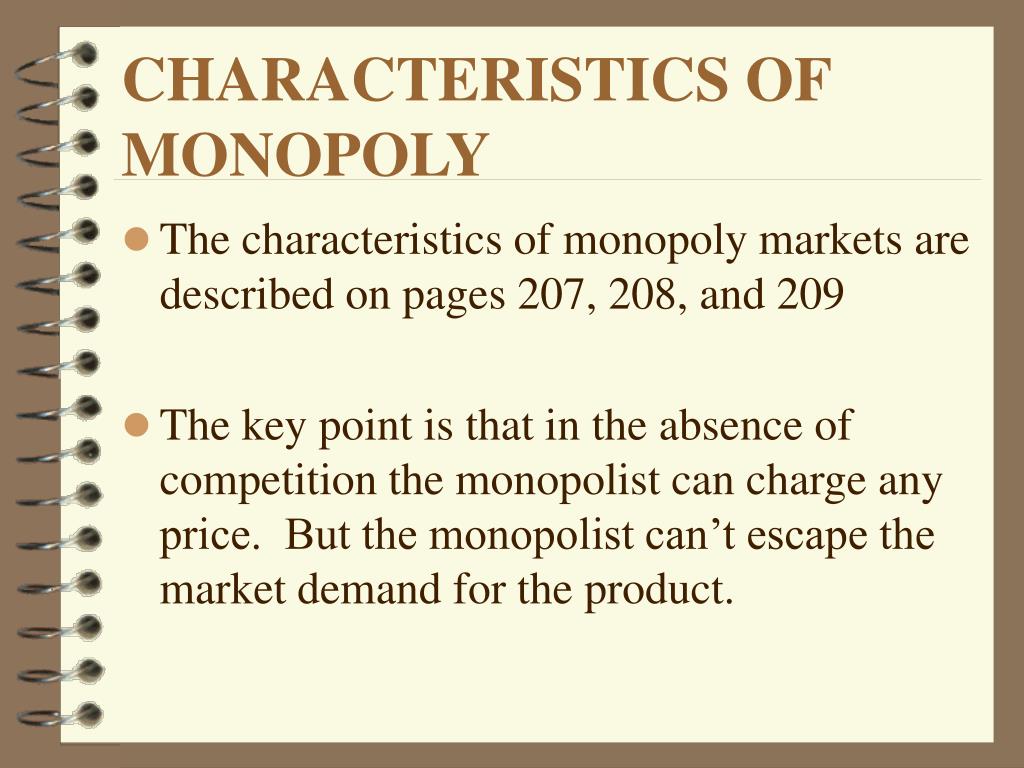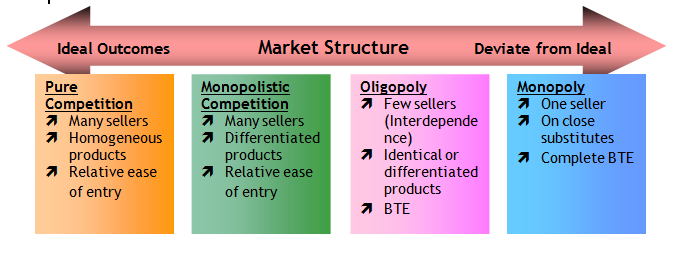

This market structure has a low barrier to entry, and the price of goods is dictated by demand and supply. Perfect or pure competition is one where a level playing ground exists for companies selling similar products.

Let us understand the difference between them so that you are better able to navigate your business that falls in such markets: Monopolistic Competition vs Perfect Competition With too much pricing power in a few hands, one doesn’t take efforts to improve customer experience. Monopolistic competition, Perfect Competition, and Monopoly are controversial market structures that tend to cripple innovation. Barriers might exist due to laws and regulations (such as patents, copyrights, etc.), access to critical natural resource or due to economic phenomena such as economies of scale, etc.īut why do some markets are easy to monopolize and others not so easy? It depends on a number of factors including elasticity of demand of the product, existence of economies of scale, control of a key resource, existence of legal barriers, etc.How is Monopolistic competition different from Perfect Competition and Monopoly? This is why high barriers to entry are important for a monopoly to exist and survive. Monopolists typically earn positive economic profit which motivates other firms to enter the market and have a chunk of the pie too.


It is important that the product offered by a monopolist has no close substitutes otherwise consumers could switch to the substitute products if the monopolist attempts to increase price and this would eliminate the monopolist’s ability charge high prices. The marginal revenue curve of a monopolist is typically a straight-line which is half-way below his demand curve as shown in the graph. Both these factors causes marginal revenue of a monopolist to fall. However, due to downward-sloping demand curve, he must reduce his price for all other units too. The equation above says that when a monopolist increases its sales by one unit, it can potentially increase revenue by P. Marginal revenue of a monopolist (MM) is given by the following equation: As shown in the graph below, a monopolist’s marginal revenue is less than its price. Since a monopolist is the sole producer, its demand curve is the market demand curve i.e. Monopolist’s Demand Curve and Marginal Revenue The three defining characteristics of a monopoly are existence of only one seller (and downward-sloping demand curve), non-existence of close substitutes (and low elasticity of demand) and very high barriers to entry. Due to extensive barriers to entry, a monopolist can earn positive economic profit even in the long-run Characteristics While perfect competition is characterized by price-taking behavior, monopolies have significant market power which enables them to dictate a price which is significantly higher than their marginal cost. Perfect competition and monopoly are two extreme cases of market structure. A firm which has a monopoly is called a monopolist. In economics, a monopoly is a market structure where only a single firm supplies a product which has no close substitutes.


 0 kommentar(er)
0 kommentar(er)
